Q1. What is a Safe Harbor 401k Plan?
A Safe Harbor 401(k) plan is the most popular type of 401(k) implemented by small businesses today. The features of a Safe Harbor plan allow an employer to automatically pass certain annual IRS compliance tests and allow its owners to maximize contributions to their 401(k) accounts. To get these benefits, the employer is required to make a contribution on behalf of their employees.
For many employers, that trade-off is well worth the cost.
Q2. Why would I want to have a safe harbor plan?
There are many reasons why you may want to implement a Safe Harbor 401(k) plan. Here are some of the most common reasons we see:
- Your plan has low participation rates or contribution rates preventing owners and other key employees from maximizing their contributions
- Most of the assets (more than 60%) in your plan belong to owners or key employees causing the plan to fail a certain annual IRS compliance test known as the Top-Heavy test.
- You already provide a generous (more than 3%) profit sharing or matching contribution to your employees
By meeting the requirements of a Safe Harbor 401(k), the plan automatically passes critical compliance tests such as the:
- Actual Deferral Percentage (ADP)
- Actual Contribution Percentage (ACP)
- Top-Heavy
As a result, you and your key employees can contribute the maximum allowable amount ($18,000; 2017) without worrying about refunds or additional employer contributions.
Q3. How much do I have to give to my employees to satisfy safe harbor requirements?
There are many contribution possibilities, but many small business owners limit their contributions to the amounts required under their chosen Safe Harbor formula.
Here are the most common contribution formulas we see that generally satisfy Safe Harbor requirements:
- Basic Match - A 100% match on an eligible employee's deferral up to 3% of annual compensation and a 50% match on the next 2% of the employee's deferrals. Effectively, a 4% match for an employee contributing 5% or more of their pay.
- Enhanced Match - A matching contribution that's at least as generous as the Basic Match at any level of an employee's deferral. For example, by far the most common formula gives eligible employees a 100% match on deferrals up to 4% of their annual compensation.
- Nonelective Contribution - A contribution for all eligible employees-including employees who don't contribute personally-that equals a minimum of 3% of their annual compensation.
Other requirements of Safe Harbor Contributions
- Eligibility - Once an employee is eligible to contribute to your plan, they are also eligible for the Safe Harbor contribution
- Allocation - Once an employee is eligible, they are entitled to their Safe Harbor contribution. You cannot impose additional restrictions such as a last day of service requirement.
- Vesting - All Safe Harbor contributions must be 100% vested immediately
Q4. How much will it cost to make the Safe Harbor contribution?
The cost of the Safe Harbor contribution for the employer depends on contribution formula and level of participation. If few eligible employees make deferrals, a matching formula may be more cost effective than the non-elective contribution.
If you want to bolster deferral rates, even at a higher cost, you may choose the 4% Enhanced Match contribution formula.
Q5. What is a safe harbor notice and what do I do with it?
Your eligible employees -- those currently able to contribute into your 401(k) -- must be given a Safe Harbor Notice each year. This notice informs all eligible employees of their rights under the plan as well as other plan information.
Generally, Inde prepares the Safe Harbor Notice and provides it to you for distribution to your eligible employees.
Delivering the Safe Harbor Notice
Each year, 30 - 90 days before the beginning of the plan year -- between Oct 1st and Dec 1st for a plan with a plan year that begins Jan 1st -- you must provide the Safe Harbor Notice to your eligible employees.
You may deliver the notice by hand, by mail or electronically.
You should record who the notice was delivered to, how it was delivered, and when it was delivered. If your plan is ever audited by the IRS or DOL, they will definitely ask for this information.
Guidelines for Electronic Delivery
Small business owners often find electronic delivery of the Safe Harbor Notice to be the most cost effective delivery method.
The Department of Labor (DOL) and IRS have separately issued their own rules regarding electronic delivery of plan information. Inde generally recommends following the Alternative Method when delivering the Safe Harbor Notice. The Alternative Method requires the employer to meet two conditions:
- You advise your eligible employees that they may request and receive the notice in hard-copy at no charge; and
- The eligible employee is effectively able to access the electronic medium used to provide the notice (e.g., work email, company intranet)
Q6. Are there restrictions on withdrawals?
Yes, Safe Harbor contributions may only be withdrawn upon the attainment of 59 1/2, severance from employment, death, disability or plan termination.
Safe Harbor contributions are not available for hardship withdrawal.
If a Safe Harbor contribution is withdrawn outside of these conditions it may be subject to a 10% early distribution penalty tax.
Q7. What are some deadlines I should know about?
If you have a Safe Harbor 401(k) plan or are considering implementing one, here are some important deadlines to consider:
- Generally, Safe Harbor plans must include a Safe Harbor provision before the first day of any Safe Harbor plan year
- New plans or plans adding a 401(k) feature must have at least a 3-month plan year.
*New calendar year plans must be established by October 1st. - A 30 - 90 day advance notice must be given to all eligible employees
- Employer Safe Harbor contribution deadlines is dependent upon the design of your plan

